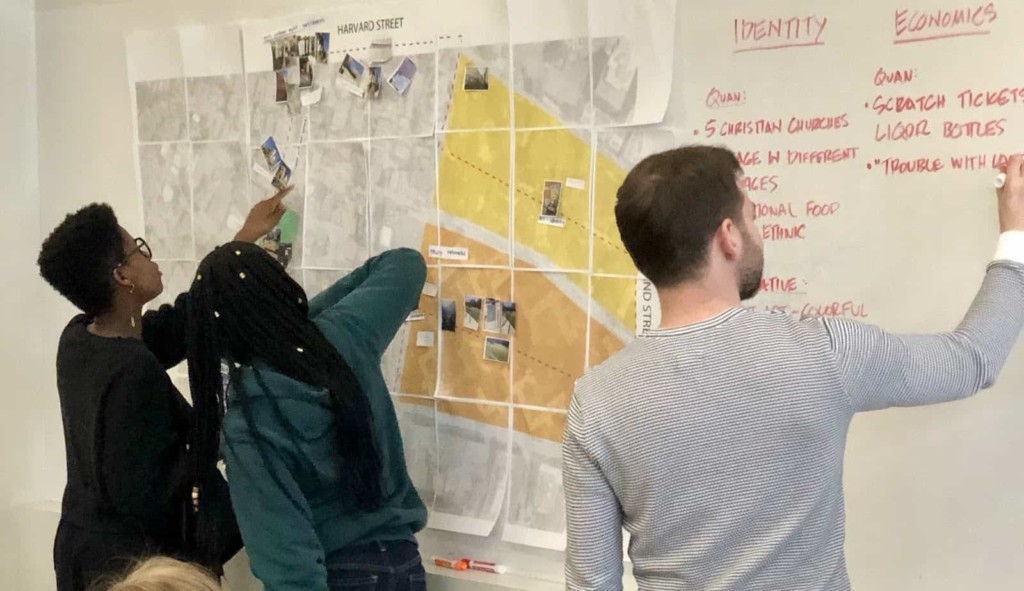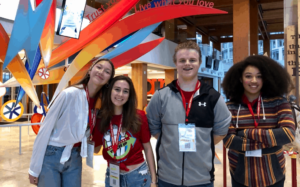15 Invention Opportunities in Learning

“The arc of human history will be bent by learning–specifically, the proportion of the seven billion people on the planet who have the knowledge and skills to support their family, make thoughtful choices and participate in self-governance.” I made that claim, noting that “learning is the most important subject in the world,” a decade ago in Getting Smart.
While access to quality education remains vital, this year–with the collision of a pandemic, racial injustice, and climate crisis–made clear that we don’t just need to upskill, we need a new set of agreements about how we get along and how we share the challenges and opportunities of our time.
Sharing the benefits of the innovation economy requires that we take apart and reconstruct old agreements, policies, and institutions that were inherently racist and inequitable. For learning institutions, a few of these outdated agreements include school funding based on local property, grading and sorting based on compliance, curriculum based on WASP history, college entrance requirements based on skills that no one actually uses, and hiring based on degrees that didn’t certify job skills.
Setting the stage for an age of invention is the rise of artificial intelligence which is enabling teams to use smart machines to do what would have been computationally impossible just months ago. AI is quickly being incorporated into every aspect of learning and systems that support learners–with the opportunity to extend access to powerful learning.
Access to capital, both private and philanthropic, has never been better. While inequitable, it is easier for anyone, anywhere to capitalize on a good idea. The widening recognition that diverse talent benefits teams (and that traditional pedigrees are less valuable) means equitable employment, as well as equitable entrepreneurial opportunities, are possible.
The Invention Opportunity
The education and development systems that help people grow and contribute face 15 great challenges that block global progress in learning. The first third is socio-political, the second third is the building blocks of learning design, and the last third is technology tools.
The pandemic quickly shifted modalities and use patterns. It resulted in new capabilities and stretched perceptions of possibilities. It also revealed flaws, inequities, and gaps in learning systems and tools. In a few well-funded edtech categories, product road maps were accelerated by a few years. But the big gaps aren’t just accelerated product features, they are new ways of provisioning public education–new agreements around new experiences and tools. Many likely require public-private partnerships where communities, schools, and tools work together in new ways.
Our draft list of 15 big invention opportunities are outlined below.
Community Agreement Challenges
- Shared reality: improved access to facts, better preparation in digital literacy, better tagging of synthetic content, visual and logic tools for building a shared reality.
- Agreement crafting: process skills and tools for facilitating rapid community conversations yielding agreements for iterative development.
- Broader aims: articulating a shared purpose of education that moves beyond narrow skill definitions/metrics to success skills, wellbeing, and contribution.
- Equitable foundation: supporting equitable access to education with weighted and portable funding, thoughtful talent distribution, and intentional locations and enrollment policies.
- Accountability 2.0: new ways of measuring success including making use of cumulative validity across broad learning goals and comprehensive records.
Learning Design Challenges
- Learner experience: how to use learning science to craft engaging and effective learning sequences.
- Credentialing capabilities: how to credential demonstrated skills (especially success skills that are context-dependent) to reduce friction in talent transactions.
- Competency-based progressions: combining individual progress with effective use of cohorts and teams (and what that means for scheduling students and staff).
- Personalized talent development: portable system of microcredentials and employment benefits.
- Nimble formats: how to enable the benefits of comprehensive systems in small safe secure and personalized environments.
Data and EdTech Challenges
- Motivational profiles: identification and use of the factors that motivate persistence and achievement to design learning environments and experiences.
- Personalized and localized guidance: relationship-based advising informed by personal and local data.
- Portable records: learners/guardians/teachers draw insights from comprehensive records drawn from teacher/partner assessments (with interoperability); learners tell their story with portfolios and portable. credentials, the permission access and receive offers from employers and postsecondary institutions.
- Wellness: how to incorporate a healthy dose of the quantified self and build access to health, wellness, and nutrition supports into education.
- Tech stack: integrated learning and administrative tools designed to support specific learning sequences.
All of the above opportunities for invention work to address roadblocks for meaningful learning and, in turn, work to include and empower the most marginalized among us. However, the paradox of innovation is that it, at least initially, introduces new inequities to systems. This series will attempt to not only describe the 15 big invention opportunities but discuss how they can be brought to scale to address fundamental inequities in the United States and globally.
If you have additions to or comments on the opportunities discussed above, we’d love to hear from you (write [email protected]).
Let’s invent for equity. We have a new, compelling opportunity to offer every person on earth access to high-quality learning. With new tools and new agreements, we can empower all learners and their communities with the tools and skills needed for a future that is already here.
For more, see:
To help inform and deliver new agreements, new practices and new tools Getting Smart and eduInnovation are exploring the Invention Opportunity thanks to support from the Walton Family Foundation and the Bill & Melinda Gates Foundation. The findings and conclusions contained within are those of the authors and do not necessarily reflect positions or policies of the foundations.
This post was originally posted on Forbes.
Stay in-the-know with innovations in learning by signing up for the weekly Smart Update.






0 Comments
Leave a Comment
Your email address will not be published. All fields are required.